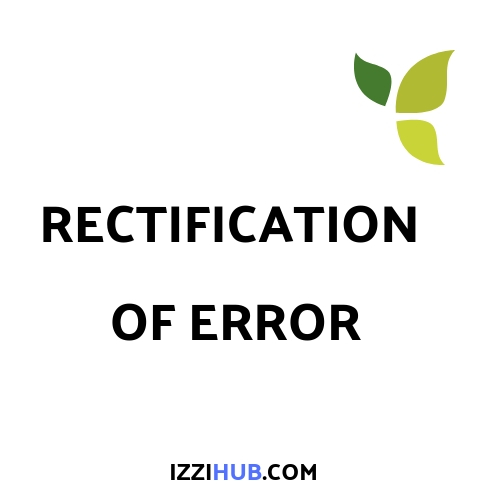Rectification of Errors in Accounting Definition with Example
Accounting starts from recording the transaction with the classification of items and posted to the relevant accounts. Being human, there may be a situation where an accountant has made some error while posting the records or forget to update the data, which affects the end results in the income statement and balance sheet. So rectification of errors is necessary for delivering accurate figures to the management and user.
When we can do rectification of errors
- At any stage but before preparing Trail Balance
- While making the Trial Balance
- Or After the completion of Financial Statement i.e. the adjustment in Next Financial Year
Before finding or feeling (With expert Judgment) that there is error and need to be correct, we should know the types of Error
There are mainly four types of error which are as mention Below
- Error of Omission
- Error of Commission
- Error of principle
- Compensation Error
1. The error of Omission:
As its name indicate that the accountant or bookkeeper forget to post the transaction, either on one side or in both sides of Debit and Credit. Here two types of omission that is the complete and partial omission

2. Complete Omission:
For Example, Cash Received from Debtor $1000. The journal entry is Cash debited with $ 1000 and Debtor Credited with $1000, In this category, forget to record the entry in Journal, means no any journal entry in the books of accounts. if he missed the complete entry trail balance will be equal.
In partial omission, as you know, that after recording an entry in Journal, the entry will be posted in each ledger. In this kind of error, one ledger is updated but the other is not. If the accountant forgets one side then the trial balance will not be matched and short with the missed amount.
3. The error of Commission:
In this type bookkeeper record both entries but charges to the relevant account instead of the original one. Classification of accounts is accurate and according to the principle but wrongly debit or credit to another account.
For Example, Cash paid for purchasing the Furniture. Here the original journal entry is Furniture (Asset) Debited and Cash Credited. But mistakenly charged to Plant and Equipment that is also a fixed asset.
3. An error of principle:
In this type of error, the bookkeeper made a mistake of the classification of the transaction. That may be Capital Expenditure treated as Revenue Expenditure, Debtors treated as Creditors, Capital of the owner recorded as a loan. It means the poor accounting of the classification of items.
Cash Received after sold of Plant and Equipment for $1000, but charged to sales accounts instead of Assets. The company sold its assets but the accountant record as sales.
By following Golden rules of accounting and having a strong command of Debit and Credit procedure we not only minimize the element of error but also can rectify them





